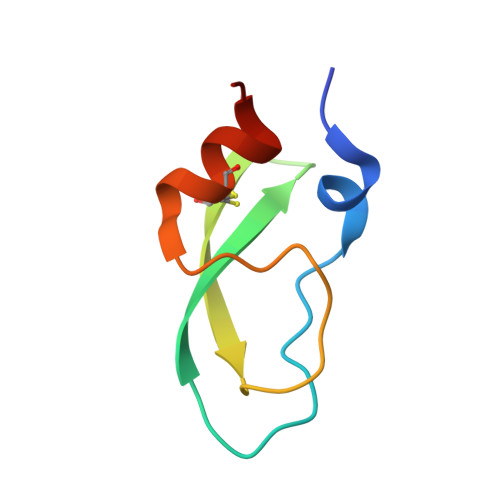Pore-modulating toxins exploit inherent slow inactivation to block K+channels.
Karbat, I., Altman-Gueta, H., Fine, S., Szanto, T., Hamer-Rogotner, S., Dym, O., Frolow, F., Gordon, D., Panyi, G., Gurevitz, M., Reuveny, E.(2019) Proc Natl Acad Sci U S A 116: 18700-18709
- PubMed: 31444298
- DOI: https://doi.org/10.1073/pnas.1908903116
- Primary Citation of Related Structures:
6Q61, 6Q6C - PubMed Abstract:
Voltage-dependent potassium channels (K v s) gate in response to changes in electrical membrane potential by coupling a voltage-sensing module with a K + -selective pore. Animal toxins targeting K v s are classified as pore blockers, which physically plug the ion conduction pathway, or as gating modifiers, which disrupt voltage sensor movements. A third group of toxins blocks K + conduction by an unknown mechanism via binding to the channel turrets. Here, we show that Conkunitzin-S1 (Cs1), a peptide toxin isolated from cone snail venom, binds at the turrets of K v 1.2 and targets a network of hydrogen bonds that govern water access to the peripheral cavities that surround the central pore. The resulting ectopic water flow triggers an asymmetric collapse of the pore by a process resembling that of inherent slow inactivation. Pore modulation by animal toxins exposes the peripheral cavity of K + channels as a novel pharmacological target and provides a rational framework for drug design.
- Department of Biomolecular Sciences, Weizmann Institute of Science, 76100 Rehovot, Israel.
Organizational Affiliation:

















